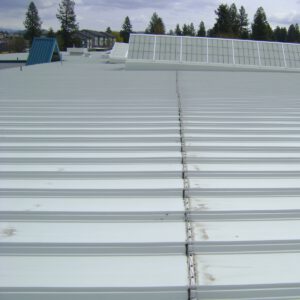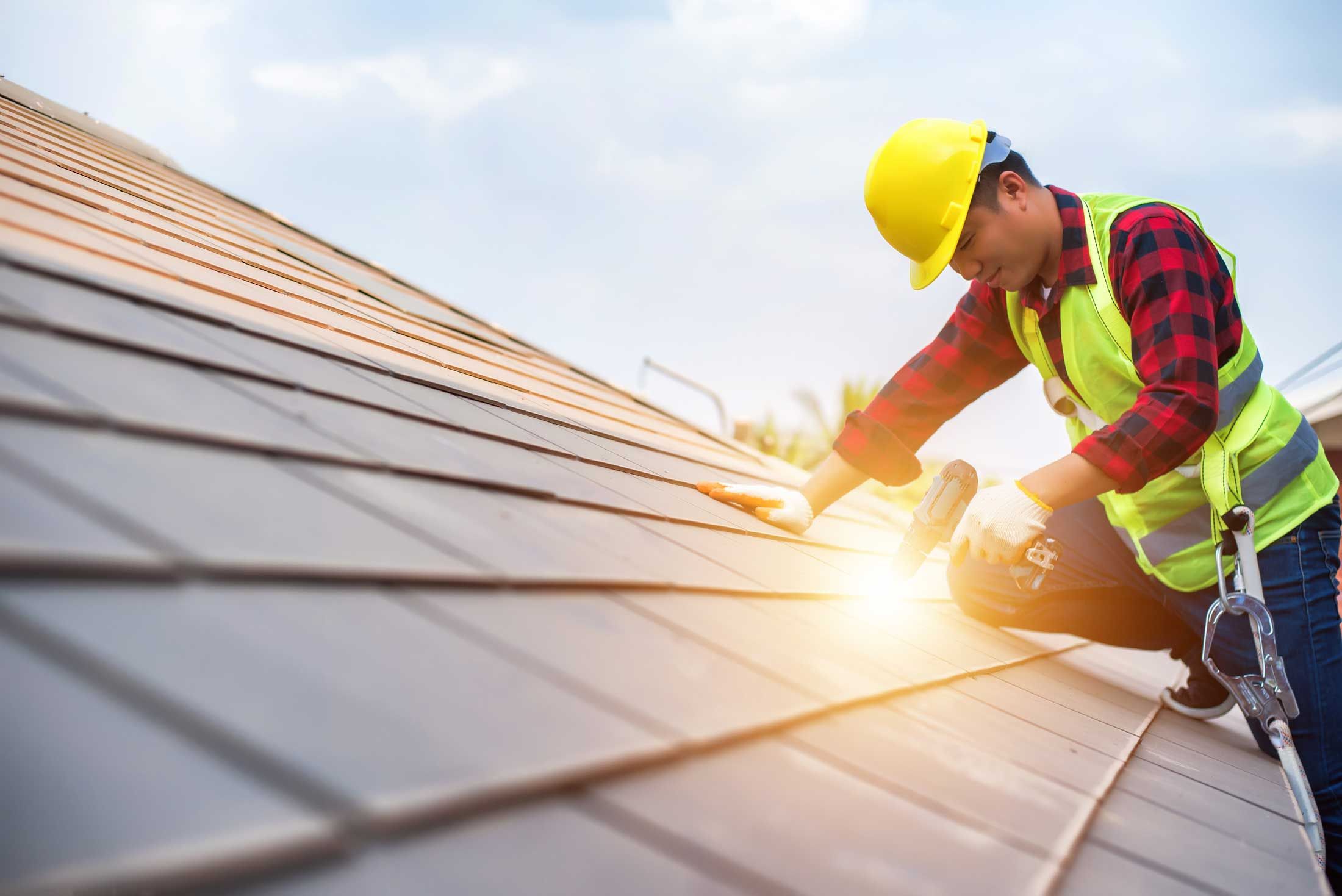A commercial roof is often different from a residential roof. The difference is due to the space size that needs covering and other elements like roofing materials.
The most common types of commercial roofing are PVC, TPO, and EPDM membranes. Atlantic County Roofers are designed to be durable and resistant to tears and leaks.

Shingles are commonly considered a residential roofing solution, but in recent years, there has been a shift to use this material on commercial roofs, too. In particular, shingle roofs are ideal for steep-sloped commercial buildings. A shingle roof is made from a variety of materials, but the most popular type is asphalt shingles.
These are available in a variety of colors and textures, making it easy to find the perfect aesthetic for your business’s commercial building. They also typically come with manufacturer’s warranties that range from 15-30 years, providing a great value for your money.
When choosing shingles for your commercial roof, it is important to choose quality products and work with experienced roofing contractors. In addition, you will want to make sure that the shingles are designed for the specific needs of your business and its architectural style. For example, cedar shingles are beautiful and durable, but they must be regularly maintained to keep them looking and functioning their best.
Standard three-tab asphalt shingles are a great option for many commercial businesses. They are cost-effective, provide excellent wind protection, and offer a variety of color options. You may also choose architectural shingles, which are thicker and more sturdy than three-tab shingles. They are more visually appealing and can provide your business with energy efficiency and fire resistance benefits, too. However, these features do increase the price point significantly and you will need to pay close attention to regular maintenance if you opt for this type of shingle. Also, if you are venting greases, oils, fats, or other flammable substances to your roof, shingle roofing is not the best choice. It will ignite much faster than other more fire-resistant roofing types.
Metal is an extremely durable and low-maintenance commercial roofing material. It is resistant to storm damage, fires, and other environmental challenges. Its energy efficiency can help to lower a building’s utility costs. It also offers a variety of customization options to suit the aesthetics of a project. While it can be more expensive up front than other types of roofs, a properly installed metal commercial roof can last decades, making it an excellent investment.
Corrugated metal panels are available in a wide range of colors, materials and finishes. They can also be customized to fit any style of architecture. The panel substrate, thickness, and fastening options can significantly affect the cost and lifespan of a commercial metal roof. Steel, aluminum and copper are the most common choices for commercial roofing, although zinc has been gaining popularity Stateside for its self-healing properties and natural aesthetic.
The panels can be fastened using concealed or exposed systems. Ribbed panels have raised ridges that add strength, making them ideal for commercial buildings in regions prone to heavy snow loads or high winds. Standing seam panels use hidden fasteners to prevent water infiltration, and snap-lock panels offer a quick installation process.
Commercial metal roofing is often used in conjunction with other building elements, such as insulation and cool roof coatings. These additional components increase the energy efficiency of a metal roof and can provide LEED credits for green construction projects. In addition, a metal roof is 100% recyclable at the end of its lifespan.
As more facility executives place value on longevity, durability, resilience, and energy-efficiency, metal is a popular choice for commercial roofing. A well-installed metal roof can reduce a building’s utility costs and offer attractive design elements to enhance the overall look of the structure.
A popular choice for flat and low slope roofs, Built-Up Roofing (BUR) offers the durability of multiple layers to protect against harsh weather conditions. It is also known for its longevity, typically offering three or more decades of protection to a commercial property with proper care and maintenance.
Essentially, a BUR system uses alternating layers of bitumen and roofing felt to create a strong and reliable commercial roof. This layered approach makes it very resistant to heavy rains and water ponding, which is a common issue for flat roofs. In addition, the reinforcing fabric and asphalt provide excellent waterproofing capabilities, making it a good choice for roofs that must stand up to severe weather conditions like hail.
The construction of a BUR system begins with the installation of a base sheet over the existing roof insulation or cover board. This provides a layer of waterproof protection for the building and allows for the subsequent layers to be adhered with hot asphalt. Depending on the roof structure and its requirements, up to four or more additional sheets of ply material and asphalt are applied, followed by a final cap sheet that contains gravel for added waterproofing.
Many BUR systems are designed to be fire-resistant, which is a great benefit for commercial structures that must comply with strict fire safety regulations. The multiple layers of ply and asphalt also provide thermal resistance, helping to regulate indoor temperatures and save on heating and cooling costs.
However, a major drawback of BUR is the difficulty in diagnosing leaks due to the multiple layers. It is important to hire a professional roofer for a BUR installation or replacement, as well as to have a regular schedule of inspections and small repairs to prevent major problems down the road.
The modern cousin of the built-up roofs (BUR) that have been on low-sloped commercial buildings for over 100 years, modified bitumen is a waterproof roofing membrane made of asphalt combined with polymerized rubber or plastic. It is then reinforced with fiberglass or another type of material to create a strong and durable roof that resists physical weathering, water damage, and heat. It is typically installed as part of a two-layer system on flat or low-sloped commercial roofs.
Modified bitumen is a tried-and-true solution for flat or low-sloped roofs, and it has many advantages when compared to other types of commercial roofing materials. For example, MB roofs are easy to install and offer superior waterproof protection that can withstand harsh conditions such as cold temperatures.
MB roofs are often installed with a base sheet that acts as the critical foundation of a flat roof. It is then covered with a vapor barrier, and a layer of reinforced polyester can be added to provide extra strength. Finally, a cap sheet is then installed with granules that help add weathering resistance and UV protection.
Modified bitumen can be installed using either a hot application or a cold-adhesion process, making it suitable for almost any roofing situation. The roof can also be layered to provide additional insulation, and the waterproof membrane protects against debris, extreme temperature changes, and high winds.
The primary benefit of a modified bitumen roof is its durability and longevity. Depending on the type of membrane used, it can last up to 30 years or more. The thick structure of the roof also makes it resistant to damage from weathering, debris, and heavy foot traffic.
Whether it’s an existing roof that needs repair or a new construction project, there are few roofing materials that perform as well as SPF. With a lifecycle that exceeds 30 years and insulation qualities unmatched by other materials, spray polyurethane foam (SPF) is a great option for any commercial building.
Applied in liquid form, SPF is sprayed onto an existing flat roof. The two-component mixture consists of isocyanate and polyol resin that’s heated as it travels down the tip of a spray gun, then quickly expands 20-60 times its original size to create a dense protective layer over the substrate roof. The resulting structure provides excellent thermal insulation and minimizes air infiltration. SPF comes in both closed- and open-cell varieties, depending on the requirements of a particular project.
Once the SPF has cured, it is then coated with an elastomeric coating that provides a waterproof barrier and enhances the foam’s fire resistance. The coating also protects against UV rays, which can break down the foam over time.
Before the SPF can be sprayed, the existing roof substrate must be pressure washed to remove all dirt, debris, and other contaminants that could interfere with proper adhesion. Then, any damaged or deteriorated areas need to be repaired or replaced in a process known as a roof tear-off.
Once the surface is prepped, the SPF is sprayed at a minimum of 1/2” and a maximum of 1.5” thick. The resulting energy efficient and durable roofing system reduces ponding, eliminates leakage, and offers superior structural support for any roof type. In addition, SPF roofs can provide significant energy savings and improved interior comfort. They also offer a wide range of benefits to commercial buildings, including:

